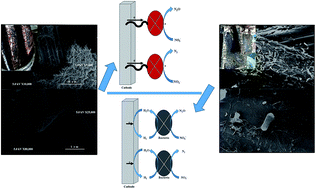Effective denitrification process by a low voltage in a multi-cathode bio-electrode film reactor†
Abstract
A multi-cathode bio-electrode film reactor driven by a low voltage was applied for the denitrification process. The reactor was evaluated with simulated wastewater (120 NO3−–N mg L−1) under a series of applied voltages (less than 0.5 V), and the applied voltage of 0.25 V was identified as the optimum for the best nitrate removal rate of 16.8 NO3−–N mg L−1 h−1 in 6 h. The analysis of the nitrogen balance showed that nitrite accumulation occurred a little, while there was an absence of ammonia during the denitrification process. The investigation of the denitrification mechanism showed the presence of some bacterial species on the cathode biofilm, which accounted for the direct electron transport pathway. The main experimental conditions of pH and temperature were optimized under 0.25 V with an optimum pH range of 7.0–8.0 and comfortable temperature of 30 °C. It seemed to be an effective approach for the denitrification with a low energy input.


 Please wait while we load your content...
Please wait while we load your content...